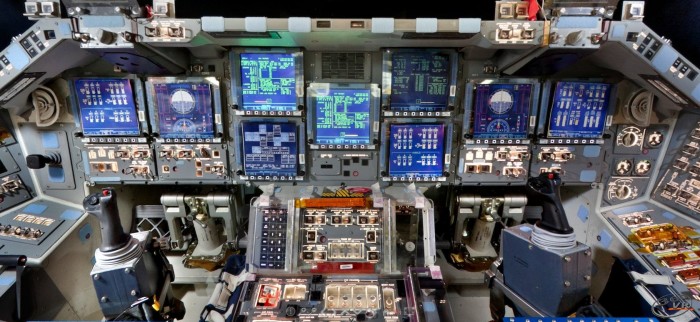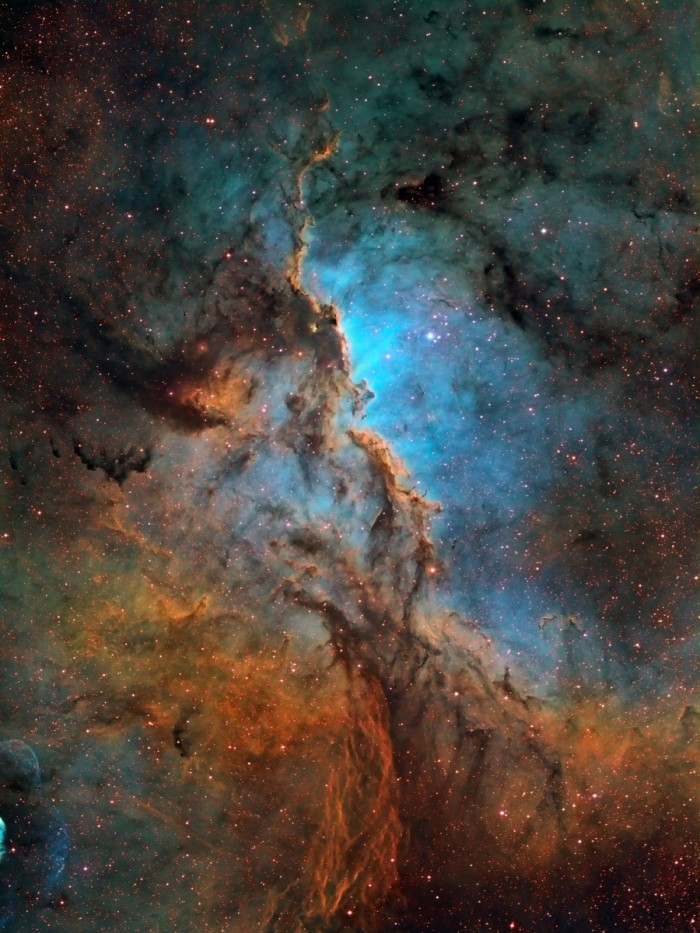NGC 7023: A Dusty Iris Nebula
From NASA APOD:These clouds of interstellar dust and gas have blossomed 1,300 light-years away in the fertile star fields of the constellation Cepheus. Sometimes called the Iris Nebula and dutifully cataloged as NGC 7023, this is not the only nebula in the sky to evoke the imagery of flowers. Surrounding it, obscuring clouds of dust and cold molecular gas are also present and can suggest other convoluted and fantastic shapes. Within the Iris, the dusty nebular material surrounds a hot, young star. The dominant color of the brighter reflection nebula is blue, characteristic of dust grains reflecting starlight. Central filaments of the cosmic dust glow with a faint reddish photoluminesence as some dust grains effectively convert the star’s invisible ultraviolet radiation to visible red light. Infrared observations indicate that this nebula may contain complex carbon molecules known as PAHs. At the estimated distance of the Iris Nebula this remarkable wide field view is over 30 light-years across.
Dual-Hemisphere Panorama of the Milky Way
From NASA APOD:
A quest to find planet Earth’s darkest night skies led to this intriguing panorama. In projection, the mosaic view sandwiches the horizons visible in all-sky images taken from the northern hemisphere’s Canary Island of La Palma (top) and the south’s high Atacama Desert between the two hemispheres of the Milky Way Galaxy. The photographers’ choice of locations offered locally dark skies enjoyed by La Palma’s Roque de los Muchachos Observatory and Paranal Observatory in Chile. But it also allowed the directions to the Milky Way’s north and south galactic poles to be placed near the local zenith. That constrained the faint, diffuse glow of the plane of the Milky Way to the mountainous horizons. As a result, an even fainter S-shaped band of light, sunlight scattered by dust along the solar system’s ecliptic plane, can be completely traced through both northern and southern hemisphere night skies.
The End of All Things
From Armageddon:
I address you tonight not as the President of the United States, not as the leader of a country, but as a citizen of humanity. We are faced with the very gravest of challenges. The Bible calls this day “Armageddon”—the end of all things. And yet, for the first time in the history of the planet, a species has the technology to prevent its own extinction. All of you praying with us need to know that everything that can be done to prevent this disaster is being called into service.
The human thirst for excellence, knowledge, every step up the ladder of science, every adventurous reach into space, all of our combined modern technologies and imaginations, even the wars that we’ve fought, have provided us the tools to wage this terrible battle. Through all the chaos that is our history, through all of the wrongs and the discord, through all of the pain and suffering, through all of our times, there is one thing that has nourished our souls, and elevated our species above its origins, and that is our courage.
The dreams of an entire planet are focused tonight on those fourteen brave souls traveling into the heavens. And may we all, citizens the world over, see these events through. God speed, and good luck to you.
It might be a movie, and it might have many factual errors, but about this it’s not far off: For the first time in the history of our planet, a species has the technology to prevent its own extinction. Will we?
Shaping NGC 6188
From NASA APOD:
Dark shapes with bright edges winging their way through dusty NGC 6188 are tens of light-years long. The emission nebula is found near the edge of an otherwise dark large molecular cloud in the southern constellation Ara, about 4,000 light-years away. Formed in that region only a few million years ago, the massive young stars of the embedded Ara OB1 association sculpt the fantastic shapes and power the nebular glow with stellar winds and intense ultraviolet radiation. The recent star formation itself was likely triggered by winds and supernova explosions, from previous generations of massive stars, that swept up and compressed the molecular gas. A false-color Hubble palette was used to create this sharp close-up image and shows emission from sulfur, hydrogen, and oxygen atoms in red, green, and blue hues. At the estimated distance of NGC 6188, the picture spans about 200 light-years.




